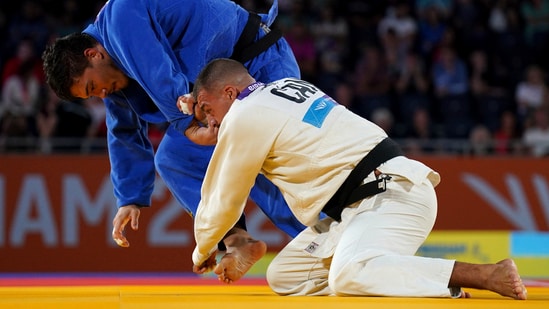CWG 2022: What is repechage rule in wrestling and how does it work
Wrestling matches in the Commonwealth Games (CWG) 2022 have begun and several Indian wrestlers, both men and women will be competing at the Games. One of the most interesting rules in wrestling is 'repechage'. Three Indian wrestlers namely Sushil Kumar, Yogeshwar Dutt and Sakshi Malik have won an Olympic medal each through the repechage rounds.

The word repechage has been derived from the French term, repecher, which means rescue. In wrestling, it comes to the rescue of wrestlers who lose to eventual finalists, during the pre-quarterfinals or later rounds. It thus gives all the wrestlers (who lost to the finalists) a chance to revive themselves and compete for the bronze medal.
Unlike many sports, the two semi-finalists don't face off against each other for the third place or bronze medal match. Instead, they square off against wrestlers who reach the bronze medal match by competing through repechage rounds. As a result, in world events like Olympics and CWG, two bronze medals are awarded in wrestling. Now let's try to understand how the repechage rule works.
Let's suppose there are finalists A and B. In that case, all wrestlers who lost to A in the pre-quarterfinals, quarterfinals and semi- finals will compete against each other in the repechage rounds. First the loser of the pre-quarterfinal will compete against the loser of the quarterfinal. And then the winner of two will compete with the semi-finalist who lost to A. The winner of the match between the revived wrestler and the semi-finalist who lost to A, will get the bronze medal.
Similarly, all wrestlers who lost to B in the pre-quarterfinals, quarterfinals and semi- finals will compete against each other in the repechage rounds. The first pre-quarterfinal loser will be up against the quarterfinal loser and then the winner between the two, will compete with the semi-finalist who lost to B. Again, the winner of the match between the revived wrestler and the semi-finalist who lost to B, will get the bronze medal. The theory behind the rule is that a worthy wrestler should be given another chance, just because they were paired with another strong wrestler very early on in the draw.
One notable wrestler who benefitted from repechage was Sushil Kumar. Sushil, during his campaign at the Beijing Olympics, in the men’s freestyle 66kg category, had lost the preliminary round (Round of 16) to eventual finalist and silver medallist Ukraine's Andriy Stadnik, but was given a revival after Stadnik reached the final. In the repechage round, Sushil faced off against American wrestler Doug Schwab, whom he beat 4-1, 0-1, 3-2. Sushil then won against Belarusian grappler Albert Batyrov 1-0,0-4,7-0. In the bronze medal clash that followed, he upstaged Kazakhstan's Leonid Spiridonov to clinch India’s second wrestling medal at the Olympics since K. D. Jadhav’s feat in Helsinki in 1952.
The repechage rule was first introduced in 2008 when International Olympic Committee introduced the knockout format for the wrestling competitions. Beijing 2008 was the first major event to employ the repechage. The rule is also used in other sports like baseball, softball, beach volleyball, cycling, fencing, rowing, rugby, sailing, track and field athletics; besides martial arts like taekwondo and karate.
Disclaimer: The copyright of this article belongs to the original author. Reposting this article is solely for the purpose of information dissemination and does not constitute any investment advice. If there is any infringement, please contact us immediately. We will make corrections or deletions as necessary. Thank you.







